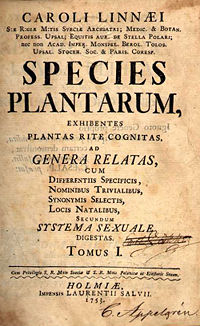
James Lind was a Scottish physician. He was a pioneer of naval hygiene in the Royal Navy. By conducting one of the first ever clinical trials, he developed the theory that citrus fruits cured scurvy.

Scurvy is a disease resulting from a lack of vitamin C. Early symptoms of deficiency include weakness, fatigue, and sore arms and legs. Without treatment, decreased red blood cells, gum disease, changes to hair, and bleeding from the skin may occur. As scurvy worsens, there can be poor wound healing, personality changes, and finally death from infection or bleeding.

1753 (MDCCLIII) was a common year starting on Monday of the Gregorian calendar and a common year starting on Friday of the Julian calendar, the 1753rd year of the Common Era (CE) and Anno Domini (AD) designations, the 753rd year of the 2nd millennium, the 53rd year of the 18th century, and the 4th year of the 1750s decade. As of the start of 1753, the Gregorian calendar was 11 days ahead of the Julian calendar, which remained in localized use until 1923.

Giovanni Battista Beccaria was an Italian physicist. A fellow of the Royal Society, he published several papers on electrical subjects in the Phil. Trans. Beccaria was one of Benjamin Franklin's more conspicuous correspondents. His students included Joseph-Louis Lagrange, Giovanni Francesco Cigna, Giuseppe Angelo Saluzzo, and the successor to the Chair of physics, Antonio Vassalli Eandi; moreover, his researches inspired the physicists of Pavia, Alessandro Volta and Luigi Galvani.
The year 1867 in science and technology involved many significant events, listed below.
The year 1751 in science and technology involved some significant events.

The year 1791 in science and technology involved some significant events.
The year 1816 in science and technology involved some significant events, listed below.
The year 1811 in science and technology involved some significant events, listed below.
The year 1790 in science and technology involved some significant events.
The year 1776 in science and technology involved some significant events.
The year 1746 in science and technology involved some significant events.
The year 1795 in science and technology involved some significant events.
The year 1844 in science and technology involved some significant events, listed below.
The year 1789 in science and technology involved some significant events.
The year 1742 in science and technology involved some significant events.
Claude François Geoffroy was a French chemist. In 1753 he proved the chemical element bismuth to be distinct from lead, becoming the official discoverer of the element. Before this time, bismuth-containing minerals were frequently misidentified as either lead, tin, or antimony ores. His observations on the matter were published in the Mémoires de l’académie française in 1753.

Georg Wilhelm Richmann was a Russian physicist of Baltic German origin. Richmann did pioneering work on electricity, atmospheric electricity, and calorimetry. He died by electrocution in St. Petersburg when struck by apparent ball lightning produced by an experiment attempting to ground the electrical discharge from a storm.
HMS Salisbury was a 50-gun fourth rate ship of the line of the Royal Navy. She was built during the War of the Austrian Succession and went on to see action in the Seven Years' War, serving in the East Indies.

The kite experiment is a scientific experiment in which a kite with a pointed conductive wire attached to its apex is flown near thunder clouds to collect static electricity from the air and conduct it down the wet kite string to the ground. The experiment was first proposed in 1752 by Benjamin Franklin, who reportedly conducted the experiment with the assistance of his son William. The experiment's purpose was to investigate the nature of lightning and electricity, which were not yet understood. Combined with further experiments on the ground, the kite experiment demonstrated that lightning and electricity were the result of the same phenomenon.







